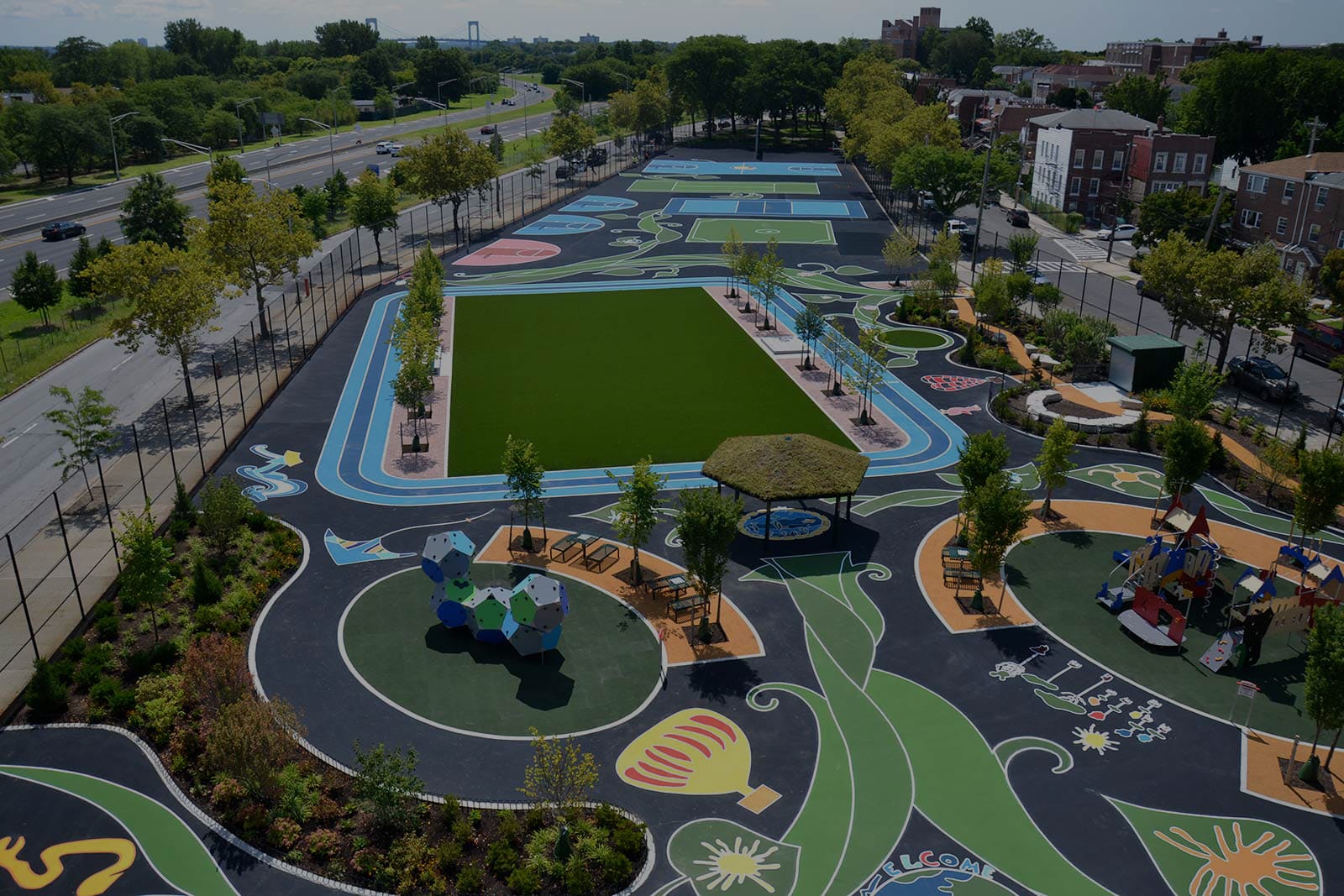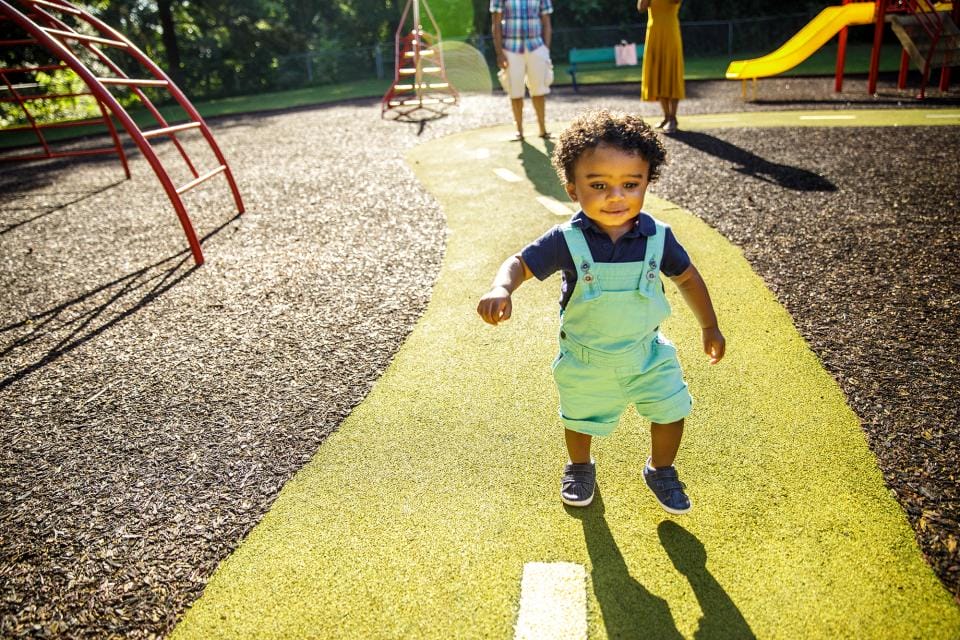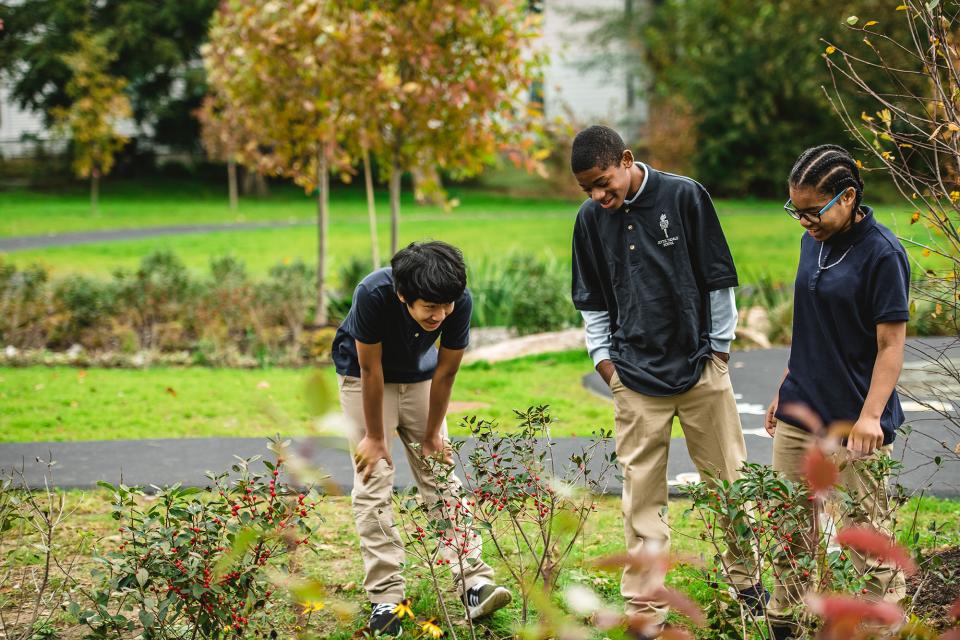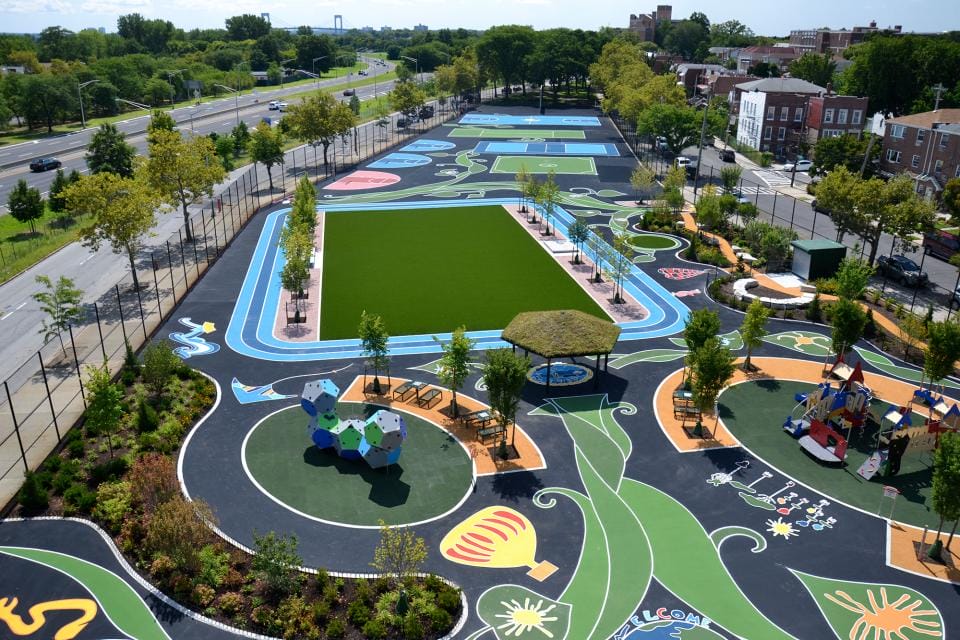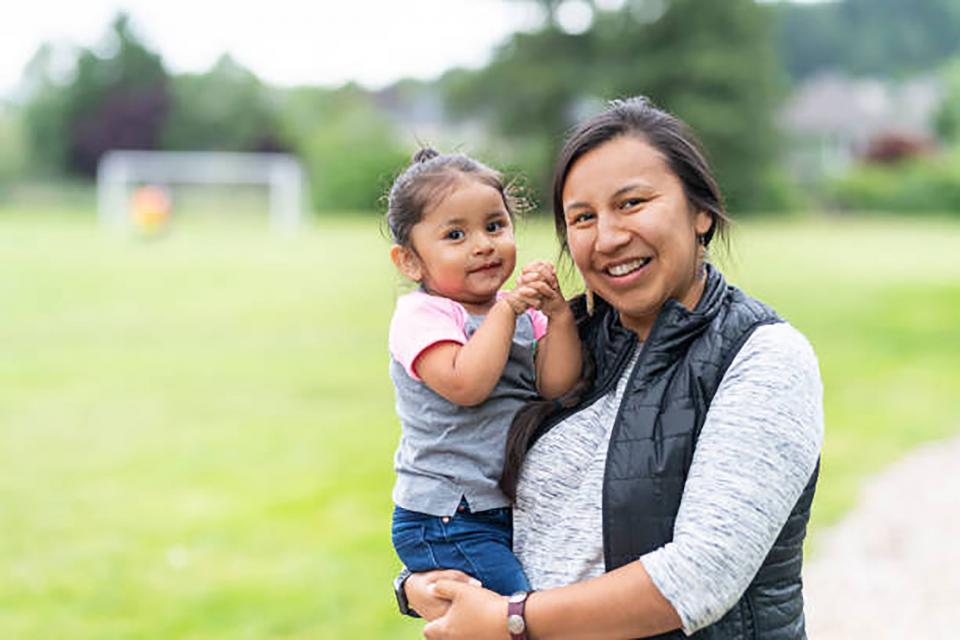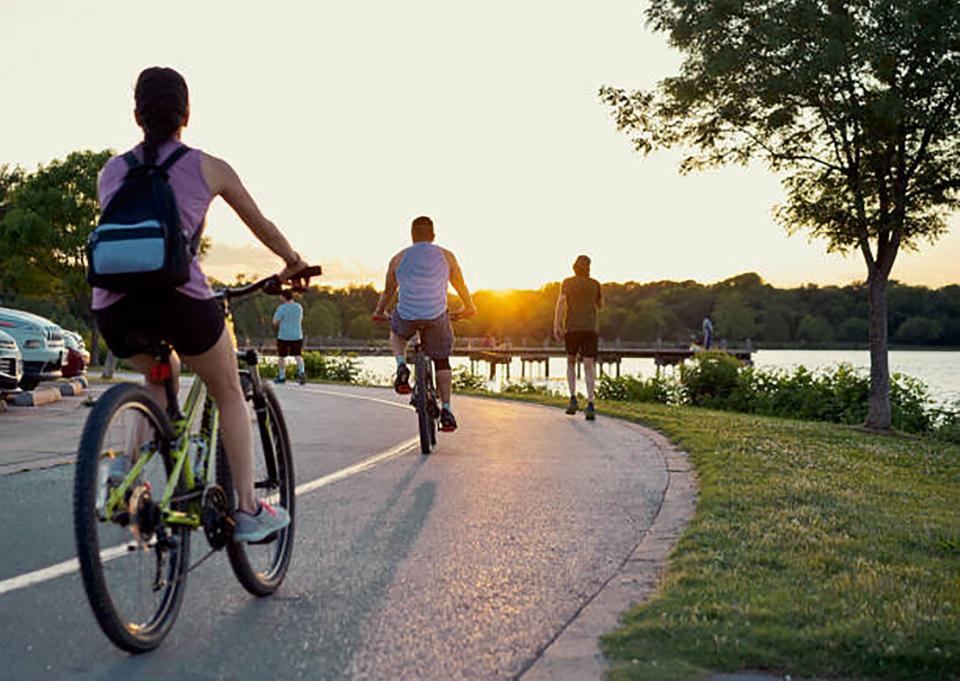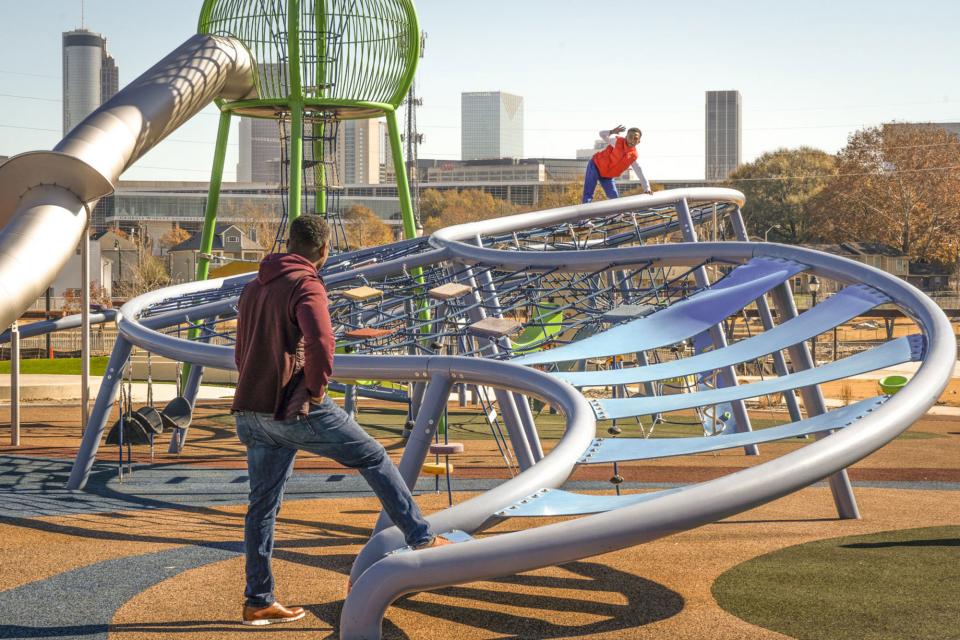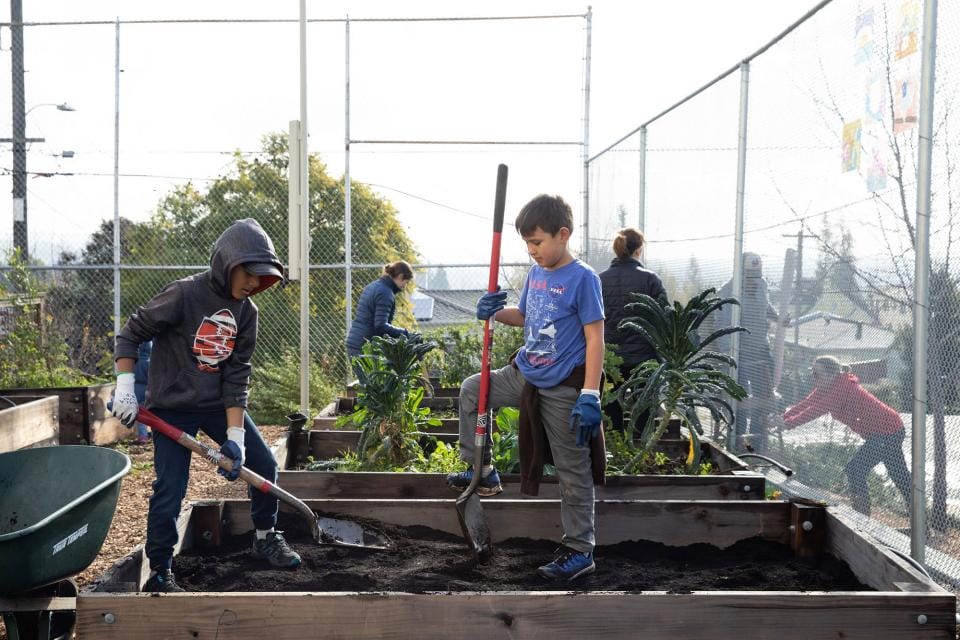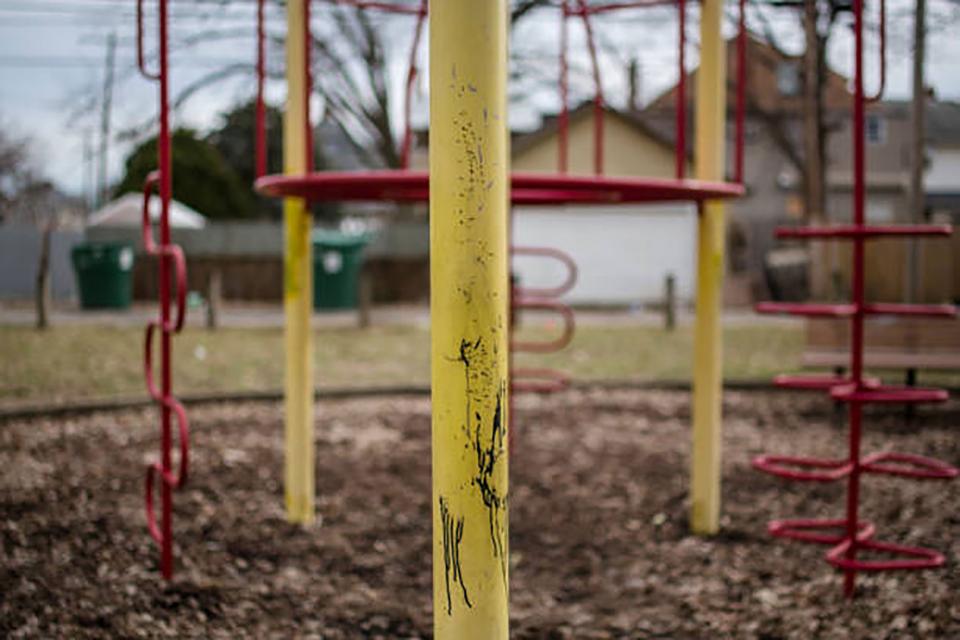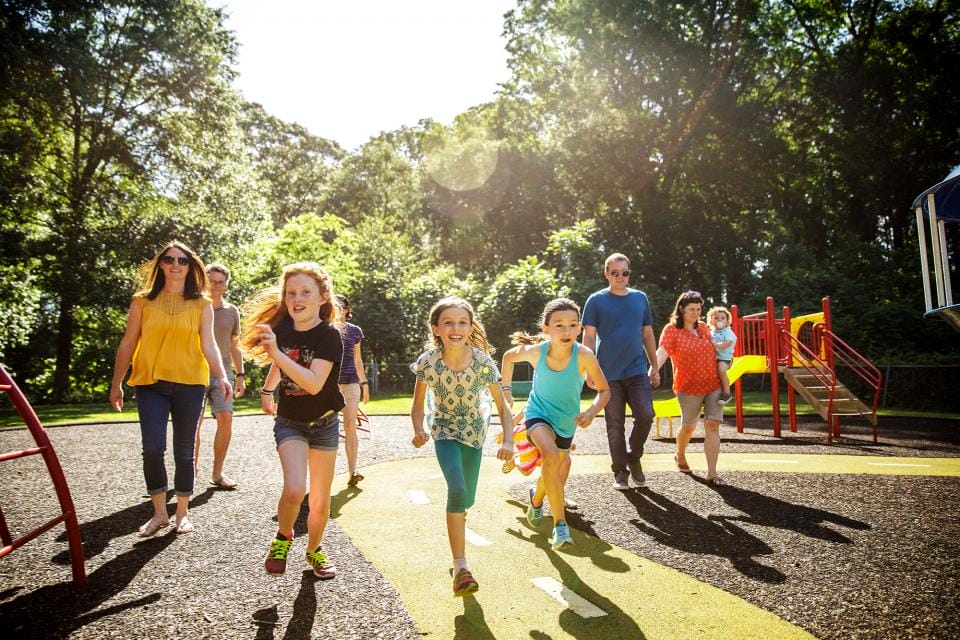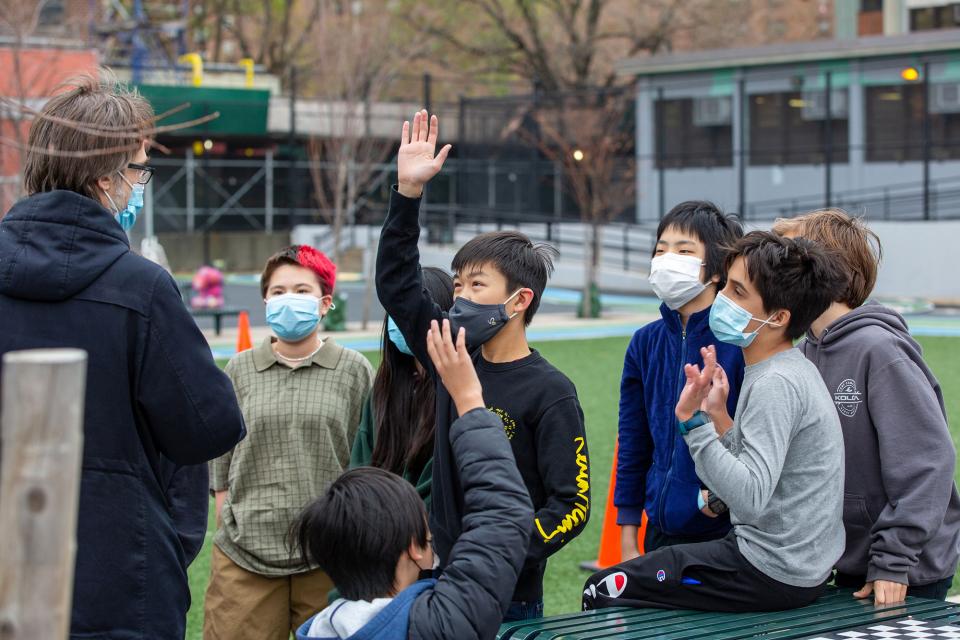This past year has proved that parks are not just a nicety—they are a necessity. As Americans endured the health and economic challenges brought on by a global pandemic, the outdoors became a lifeline.
Local parks from Washington to Tennessee to Virginia saw dramatic upticks in usage from people seeking exercise, safe social connections, and the restorative effects of nature. Parks proved their mettle as essential public infrastructure, serving as venues for everything from meal distribution to COVID tests and vaccinations to gathering spaces for protest and mourning.
[How well is your city meeting the need for parks? Explore the 2021 ParkScore rankings.]
This year also exposed vast inequities across every facet of society, including our park systems. If you lived within walking distance of a park, you could safely get outside, gather with friends, exercise, and maintain your mental health. But if you were one of the 100 million Americans who don’t have a park close to home, you were vying for the same patch of outdoor space as many of your neighbors. And as the data around access to parks shows, that was too often the case for low-income neighborhoods and communities of color, the same communities that were hit hardest by the virus.
This five-part report examines the park equity gap in America and our evolving relationship to our parks and public land during this historic crisis. Explore each section of the report below by clicking or tapping on its title.
-
By Ronda Chapman
Our data shows major disparities in access to the outdoors. In the 100 most populated cities, neighborhoods where most residents identify as Black, Hispanic and Latinx, American Indian/Alaska Native or Asian American and Pacific Islander have access to an average of 44 percent less park acreage than predominantly white neighborhoods, and similar park space inequities exist in low-income neighborhoods across cities, highlighting the urgent need to center equity in park investment and planning.
The collective traumas of the past year—from the devastating toll of the pandemic to the horrific killing of George Floyd—have reverberated through American society, prompting widespread attention and action on racialized violence, unequal access to health care, and economic stress. They have also underscored the urgent need for environmental justice and park equity.
During the pandemic, the wealthy fled urban areas for country homes, while suburbanites spread out in backyards and visited nearby parks. In too many cities, however, residents without shaded, tree-lined streets and close-to-home public green spaces found it much more challenging to get outside. Not only do parks yield all sorts of health benefits, but with COVID-19 circulating, they provided one of the few venues where people could safely socialize.
[SIGN NOW: Tell Congress to support emergency funding for local parks!]
Nationwide, 100 million people, including 28 million children, do not have a park within a 10-minute walk of home. Decades of systemic racism and redlining have led to chronic disinvestments in parks and recreational facilities in many marginalized communities, resulting in too few parks as well as parks marred by cracked asphalt, barren fields, and broken play equipment. Last year, we analyzed data from 14,000 cities, towns, and census-designated places across the United States and found that Black, American Indian/Alaska Native, Hispanic or Latinx, Asian American, Pacific Islander, and multiracial populations—when they do have parks within a 10-minute walk—are likely to find small, crowded spaces—not the kind of parks that allow for social distancing or cooling shade.
The analysis revealed that parks serving a majority people of color are, on average, half as large—45 acres compared to 87 acres—and serve nearly five times more people as parks that serve a majority-white population. It also found that parks serving primarily low-income households are, on average, four times smaller—25 acres versus 101 acres—than parks that serve a majority of high-income households.
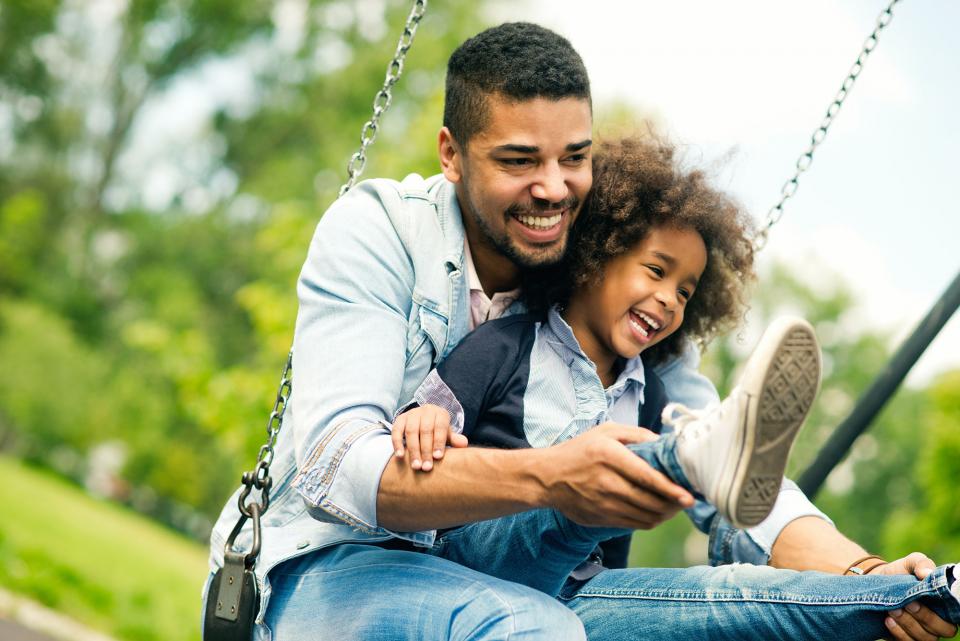
Research shows that the way a city distributes and invests in parkland directly affects the well-being of all residents.
A new way to measure park systems
To get a more complete sense of the racial and economic disparities driving who does and doesn’t have access to quality parks and green spaces, this year, we added a new category—equity—to its annual ParkScore® index, the rating system that measures how well the 100 largest U.S. cities are meeting the need for parks.
Prior to this year, our rankings were based on just four categories: acreage, investment, amenities, and access. But research shows that the way a city distributes resources and invests in parkland directly affects the well-being of all residents. And we know that access to green space has implications for physical and mental health, as well as residents’ ability to withstand the effects of climate change, from extreme heat to flooding.
To measure park equity, we took the average of the following metrics for each of the 100 ParkScore cities:
- Percentage of people who identify as Black, American Indian/Alaska Native, Asian American, Pacific Islander, Hispanic or Latinx, other, or two or more races that live within a 10-minute walk of a public park
- Percentage of low-income households that live within a 10-minute walk of a public park
- On a per capita basis, the ratio of nearby (within a 10-minute walk) public park acres between neighborhoods that are home to people who predominantly identify as Black, American Indian/Alaska Native, Asian, Pacific Islander, Hispanic or Latinx, other, or two or more races and White neighborhoods
- On a per capita basis, the ratio of nearby (within a 10-minute walk) public park acres between low-income neighborhoods and high-income neighborhoods
Over the next several years, we will continue to update the equity evaluation by incorporating additional data, such as metrics measuring the spatial distribution of park resources (like spending and amenities) as well as data around park policies. We believe these additional metrics will give an even more precise picture of how equitably park resources are distributed in each city, to aid in decision-making for the future.
While many of the 100 cities we survey for the ParkScore index do monitor these kinds of additional metrics, not every city has the technology and human resources to collate this information today. But by adding equity to our ParkScore evaluation, we hope to support cities in making the case that they can expand their data capture as a means to improve their park systems for the communities of greatest need.
2021 park equity findings
- Across the 100 most populated cities in America, predominantly white neighborhoods average more park acreage per person than neighborhoods that are home to primarily Black, Asian American, Hispanic or Latinx, American Indian/Alaska Native, Pacific Islander, or multiracial residents.
- Seventy have more park acreage per person in predominantly white neighborhoods as compared to neighborhoods where a majority of residents identify as people of color, and 66 have more park acreage per person in high-income neighborhoods than in low-income neighborhoods.
- Neighborhoods where residents predominantly identify as people of color have access to an average of 44 percent less park acreage than predominantly white neighborhoods, and low-income neighborhoods also average 42 percent less park acreage per person than high-income neighborhoods.
- The disparity in distribution of park acreage is most significant between predominantly white neighborhoods and neighborhoods where the majority of residents identify as Hispanic or Latinx. Predominantly Hispanic/Latinx neighborhoods have access to 54 percent less park acreage per person than predominantly white neighborhoods.
Some cities, like Milwaukee, have comprehensive blueprints to redress years of neglect and unequal resources in certain neighborhoods. Pam Linn, the recreation facilities project manager for Milwaukee Recreation, is helping implement a 10-year, $25 million plan to remake the city’s 52 playfields. The recreation department, under the auspices of the city’s public schools, maintains and programs the “playfields”—basically neighborhood parks with recreational amenities. Most are located in residential neighborhoods rather than attached to schools.
Several years ago, the department hired a consultant to study their condition. “Over 60 percent of playfields were ranked ‘fair’ or ‘poor,’” said Linn in a phone interview, noting that disparities also existed based on demographics. “Where do you start?”

Neighborhoods of color have access to 44 percent less park acreage than predominantly white neighborhoods, and similar park space inequities exist in low-income neighborhoods across cities.
So recreation officials devised a plan to renovate as many of the playfields as possible. To determine which ones would go first, they decided to consider not only a playfield’s condition, but also its neighborhood characteristics, including race, income, poverty rate, and crime rate, among other things. According to U.S. Census data, in 2010 Milwaukee’s population was 40 percent Black or African American and 17 percent Hispanic or Latinx, and nearly a third of children lived in poverty.
Five renovations are now complete, two are under construction, and four more are in the design phase. One site that shot to the top of the list was Southgate Playfield, a 1.9-acre expanse of blacktop encircled by a chain-link fence. “It was so hot in the summer and there were huge cracks in the asphalt,” said Linn, a landscape architect. “You couldn’t even roller-skate. There was literally nothing you could do in that space.”
The renovation reduced the playfield’s asphalt footprint by 77 percent, with a new grass field, walking paths, and more than 30 new trees. A splashpad gives residents a place to cool off in summer, while new basketball courts are painted in whimsical colors like pale blue and peach, which don’t absorb heat as much as dark hues. There are new slides, climbing equipment, and shade structures.
“It was fantastic to watch the community embrace this new space,” Linn said of the opening day last spring.
Communities lacking quality parkland and green spaces suffer the consequences. Access to green space and time spent in nature correlate to a number of positive health outcomes: reduced stress, less depression and anxiety, improved concentration, lower obesity rates, reduced blood pressure, faster healing after surgery, and lower mortality.
Green space also makes communities more resilient to climate change by absorbing floodwater and providing much-needed tree shade. The cooling benefits of densely vegetated parks can even extend beyond their borders into the surrounding neighborhoods.
A report commissioned last year by the Hispanic Access Foundation and the Center for American Progress revealed that people of color were three times more likely to reside in nature-deprived communities than white populations.
“The United States is losing a football field’s worth of natural area every 30 seconds,” the report authors stated, adding that, annually, that equated to the size of Everglades National Park. “The effects of these losses are not equally distributed across socioeconomic and racial groups … patterns of development—including urban sprawl, the construction of roads, pipelines, and transmission lines, and drilling, mining, and logging—have had a disproportionately large impact on communities of color and low-income communities.”
A call to action: parks, jobs, and equity
To address inequity in the nation’s parks, and boost the battered economy, we are leading a coalition of more than 200 organizations, including the Sierra Club and Outdoor Afro, in urging Congress to pass the Parks, Jobs, and Equity Act. The legislation, which has bipartisan support, would make a $500 million investment in local parks.
Crucially, the money is earmarked to be distributed to redress the park equity gap. The bill specifically states that priority will be given to urban areas that “lack parks and/or outdoor recreation areas within one-half mile or a 10-minute walk” and to “high-need populations based on income, age, or other measures of vulnerability and need.”
When the legislation was introduced, Diane Regas, Trust for Public Land president and CEO, said: “Park inequity has long plagued communities across the country and over the past year, the pandemic has exacerbated glaring disparities from this lack of access. This bipartisan legislation will provide urgently needed funding to help close the outdoor access gap that contributes to unacceptable disparities in health, climate resilience, and prosperity for too many people living in America.”
We endeavor to close that gap across the country by working with communities that have been subject to long-standing environmental injustices to cocreate green spaces in neighborhoods with the least access to quality parks today.
Just south of downtown Los Angeles, in the city of South Gate, for example, we are leading efforts to convert a seven-acre, city-owned property into a nature park on the Los Angeles River, to be called the Urban Orchard. Sitting in the shadow of a busy highway, South Gate is a family-oriented community filled with local pride. At the same time, its 93,000 residents—94 percent of whom are Latinx—share their city with three Superfund sites, and as a result, their town is cloaked in air pollution, as well as industrial waste.
“When you look at our climate index, the pollution burden in South Gate is 98 percent,” said Robin Mark, our Los Angeles program director. “You have the 710 freeway that takes all the goods from the ports to the rest of the country and the residents here are inhaling all of these fumes.”
Residents wanted Urban Orchard to be a green oasis, with walking paths, an education garden, and a nature-based playground. As its name suggests, the Urban Orchard will feature more than 200 fruit trees, including avocado, guava, lemon, and lime.
The $24 million project will have a newly constructed wetland, which will capture and filter storm-water runoff that flows from points north. Currently, all that runoff sluices through a channel out to the L.A. River, adding to the pollution there. The wetland will naturally filter the runoff, which will then be used to irrigate about three-quarters of the park.

“The fruit tree species were chosen by local residents,” Mark said. “And through our partnership with the Conservation Corps of Long Beach there will be job-training on the site. Thirty young people from the community will have the opportunity to gain valuable construction skills.”
Another way to bridge the park equity gap is to better utilize existing public spaces. Our schoolyards program has transformed more than 210 school properties around the country, installing trees and gardens, new play equipment, and turf fields. The renovated schoolyards are open to the community after school and on weekends, improving park access.
[Subscribe: Get the latest news about the park equity change you help make possible.]
For example, in West Philadelphia, we are working on a Green Schoolyard project at Alain Locke Elementary School, partnering with the school district, the city, and Drexel University. The schoolyard will eventually serve more than 6,000 residents within a 10-minute walk. Of those residents, 81 percent are Black, and nearly half live in poverty. Many suffer from asthma, diabetes, heart disease, and other diseases related to inactivity. “It’s the school with the highest concentration of students living in public houses or homeless shelters,” said Owen Franklin, our Pennsylvania state director. “It’s a big schoolyard with broken pavement in a neighborhood of generational poverty.”

To close the park equity gap, we must get creative to optimize the open space we already have, in places like forgotten alleyways, postindustrial waterfronts … and asphalt-covered schoolyards.
Not far away, a green space at the corner of Mount Vernon and North 37th Streets illustrates the way park renovations can help communities long after the opening day ribbon-cutting. Completed in 2016, the renovation in the Mantua neighborhood of West Philadelphia included fresh play equipment, updated basketball courts, and newly planted trees. The park serves more than 11,000 residents, 60 percent of whom are Black, within a 10-minute walk. It also creates a platform for groups like H.U.B. Coalition Inc. and the Mantua Civic Association to provide a host of community services.
During the pandemic, community leaders activated the playground to distribute fresh food and prepared meals to those in need, particularly school-aged children. (For more than two decades, the neighborhood has not had any grocery stores.) Other partners organized arts events, including painting and puppetry workshops for children coping with feelings of isolation caused by remote learning.
And a nonprofit legal-aid organization hosts monthly Expungement Clinics at the park, offering free services aimed at expunging, or erasing, criminal records. The organization identifies candidates through monthly intake sessions in communities most affected by criminal-record data, which can make it difficult to get a job and access other opportunities.
Taken together, the services offered at this small park in one corner of Philadelphia offer a powerful example of the potential for green spaces to sustain, enrich, redress, and heal a community long burdened by social, health, and economic inequities. To me, this is what equity in parks means.
Ronda Chapman is director of equity at Trust for Public Land.

